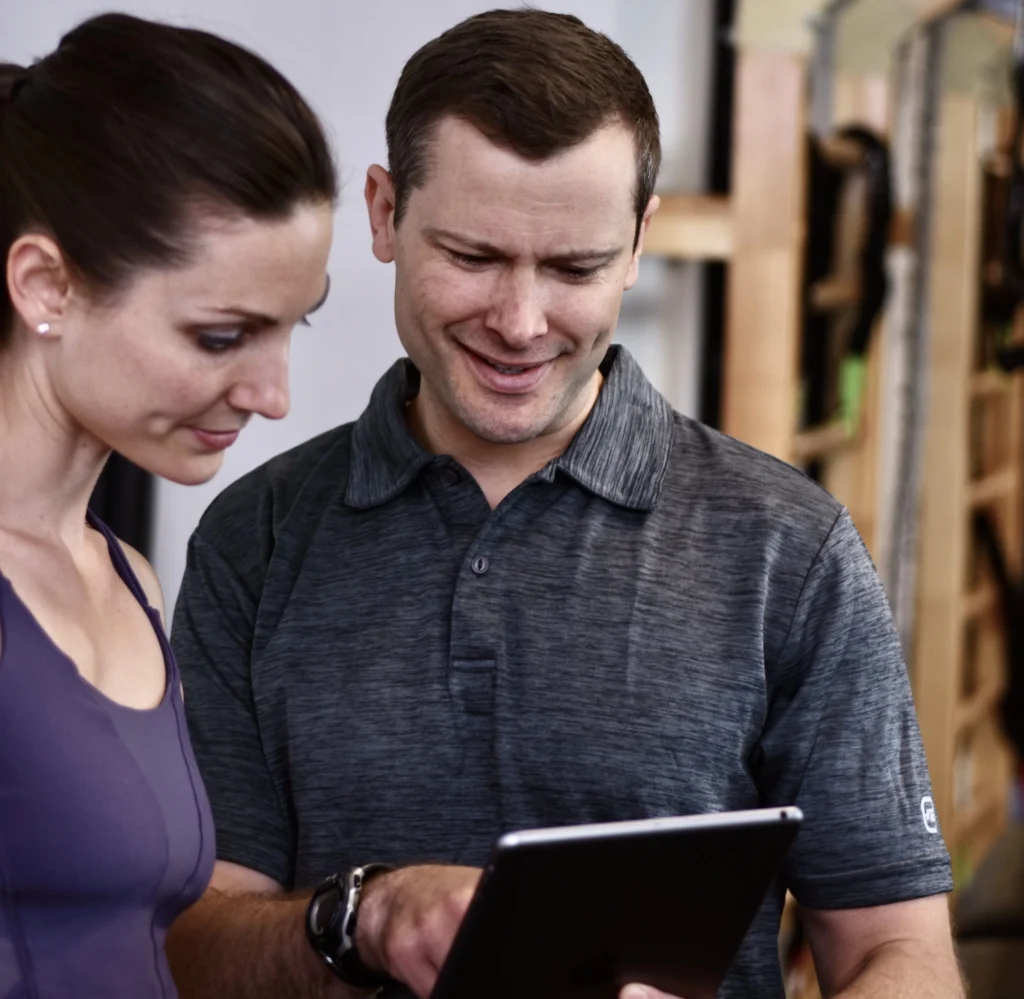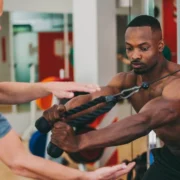Trainer Talks: Rick Richey on Education & Entrepreneurship

Rick Richey shares his innovative approach to the business of personal training and gives his thoughts on the rise of online fitness
With a career that spans over two decades, Rick Richey has donned multiple hats as a certified personal trainer, massage therapist, educator and entrepreneur. His commitment to fitness education and personal training is evident in his roles, ranging from a subject matter expert to an educator, contributing to National Academy of Sports Medicine (NASM) textbooks, and hosting the NASM CPT Podcast.
Richey’s entrepreneurial ventures, including the establishment of Independent Training Spot and co-ownership of RēCover, underscore his professional commitment. Through these endeavors, Richey has created unique spaces for personal trainers and clients alike. D
Drawing from personal experiences, Richey shares powerful stories of client transformations, highlighting the profound impact of tailored fitness programs.
Athletech News spoke with Richey about his viewpoints on staying relentless and relevant.
This conversation has been lightly edited for clarity and length.
Athletech News: Throughout your career, you’ve witnessed many changes in the fitness industry. What do you consider the most significant innovation in personal training?
Rick Richey: Undoubtedly, the biggest change I’ve seen in my career has been the shift to online personal training and fitness. This move to virtual experiences, like training sessions via platforms like Mirror or Peloton, has been unparalleled. Even trainers who used to rent space from me have moved their businesses online, a trend accelerated by the pandemic.
Before, trainers needed physical space, especially in the city. Now, many operate entirely online, finding it unnecessary to return to in-person sessions if they or their clients live outside urban centers.
This digital transformation might not have happened so rapidly without the lockdowns. It echoes the lifestyle Tim Ferriss described in “The Four Hour Workweek” long before the pandemic. Ferriss argued for a work life that’s more about efficiency than hours spent in the office, a concept that’s become our reality.
ATN: What inspired you to create the Independent Training Spot, and how do you believe it changes the way personal trainers and physical therapists operate their businesses?
RR: There are numerous small gyms out there where trainers pay to use the space, either through a monthly rental or per session fee. This concept wasn’t new when I started, but I noticed a gap in the market for a branded gym that catered specifically to independent trainers. I contemplated creating a space that differed from both the big gym model, where trainers are employees, and the smaller gyms that offer more freedom but lack brand identity.
I envisioned the first branded independent training gym, a place exclusively for trainers to conduct their business. This model doesn’t allow for gym memberships for the public; it’s a professional workspace for trainers, like co-working spaces. We offer the gym, equipment, and amenities needed for a great training session. It’s a business-to-business (B2B) model, where trainers and their clients handle their arrangements, and I facilitate the space.
Aiming for six locations in New York City seemed right, creating an ecosystem where gyms support each other and provide trainers the flexibility to work across multiple locations. This approach took time to become profitable, with our fifth gym breaking even operationally within three months of opening in September 2023.
The challenge was figuring out what I could afford and what the gyms needed. Consulting with trainers about their essentials helped shape the functional, open design of the gyms, focusing on equipment that allows free movement and versatile workouts. This journey involved refining our business model and gym design, based on feedback and trends, to ensure our spaces met the needs of independent trainers and their clients.

ATN: Can you share a particularly memorable success story of a client you’ve trained and what it taught you about the personal training profession?
RR: I had the privilege of training a highly successful neurovascular surgeon suffering from severe back pain, exacerbated by the heavy lead bib he wore for radiation protection during surgeries. Despite previous experiences with trainers, he sought strength and back protection, expressing fear of further injury.
Recognizing the importance of meeting his needs, I focused on gentle, effective exercises that avoided stressing his core initially. We embarked on a regimen of spinal mobility drills, complemented by a daily routine he diligently followed. This approach not only alleviated his back pain but significantly improved his quality of life, allowing him to work and live without discomfort.
This transformation from being the least functional version of himself to reaching a level of functionality he hadn’t experienced in years was profoundly rewarding. It underscored the importance of tailored training programs over generic, aesthetic-focused workouts. True success in personal training lies not just in changing how someone looks, but in enhancing how they live their lives, free from pain and limitations.
ATN: As host of the NASM CPT Podcast, what have been some of your most insightful or surprising discussions?
RR: The NASM CPT Podcast is designed for certified personal trainers and offers insights from an NASM lens. It also aims to solve real-world problems within the fitness industry. A notable episode discussed the use of GLP-1 drugs like Ozempic, addressing both its medical necessity for individuals like me, a diabetic, and its controversial use for minor weight loss.
This episode sparked significant discussion, leading to a MarCom award win, highlighting its impact beyond just fitness advice. It’s crucial to acknowledge the broader implications of such treatments, including potential muscle tissue loss and bone density degeneration, alongside their benefits. This episode underscored the importance of informed use, especially when life-changing medications become co-opted for vanity, which personally resonated with me and stood out as a particularly impactful conversation.
ATN: Where do you see the future of the fitness industry heading, especially considering the evolving landscape of health and technology?
RR: Over the past decade, there’s been a significant trend towards boutique fitness, which has seen many of these specialized studios being consolidated under larger entities. This phenomenon has essentially come full circle, transforming back into the all-encompassing gyms we were familiar with before the boutique boom.
Despite this, I predict a resurgence of interest in larger, traditional gyms that offer both gym facilities and classes in a single location.
However, boutique fitness won’t disappear; its ability to provide higher compensation makes it attractive to class instructors and personal trainers seeking better earnings and more autonomy than what conventional gyms offer. This adaptability reflects the dynamic nature of fitness professions and the ongoing quest for fulfilling career paths within the industry.



